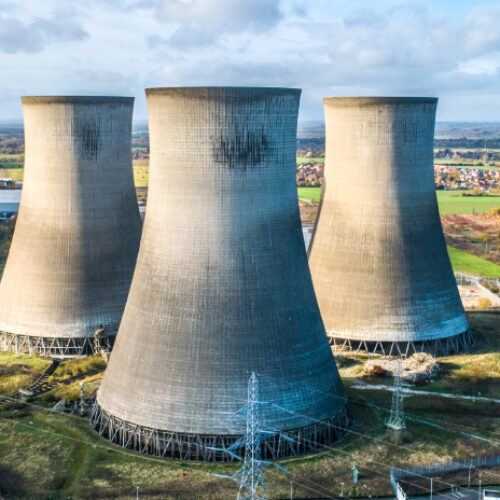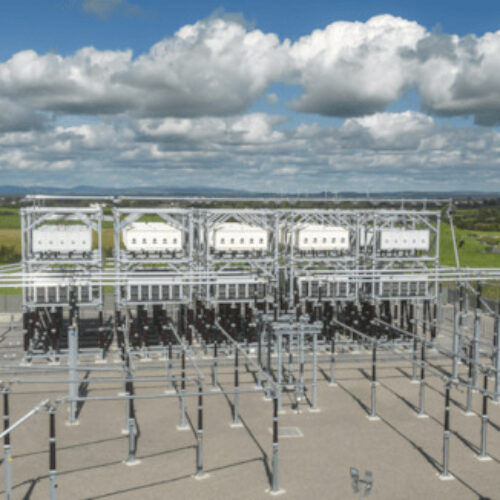Spare a thought for those working in National Grid’s media team, specifically those tasked with managing its electric vehicle messaging. Last year, following the publication of the 2017 Future Energy Scenarios (FES) document, they probably thought everything was just about under control.
The range of four scenarios laid out in detail the system operator’s thinking on the impact on peak demand of various take-up rates, ranging from around 6GW added to peak up to 18GW in the most extreme case.
It went on to later add that post 2045, this could – and it is important to stress that word – reach 30GW a year depending on uptake; peak demand in July 2017 when the forecast was published sat at 61GW.
Despite the very clearly stated hypothetical nature of these forecasts, it was of course the 30GW figure that was picked up by mainstream press and used to whip up fears over the impact of electric vehicles.
“Ten new nuke plants” would be needed as “Brits forced to go green” read one article just to give a sense of the coverage, although certainly an improvement from the Daily Mail’s “20 more nuclear stations” story from February 2017.
This led to National Grid cancelling media interviews on the subject (including those with Clean Energy News (not that we’re bitter – Ed)) until a new communications strategy could be worked up to counteract what had seemed to be a genuine surprise to the organisation.
The following myth-buster document set out to put right the perception of National Grid’s estimates which it said had been “cited incorrectly and sometimes out of context” by national media outlets. To be clear, it added that the “best fit” scenario for added peak demand from EVs landed at around 5GW, not 30GW.
Unsettled arguments
Fast forward eight months to an insightful evidence session hosted by the business, energy and industrial strategy select committee who were speaking to National Grid’s EV lead Graeme Cooper, alongside representatives from Ofgem and the UK’s energy networks.
In the wide-ranging session, the key story picked up this time by many was that Cooper said that National Grid would “actively support” bringing forward the UK’s planned ban on the sale of petrol and diesel vehicles from 2040 to 2030.
While it could be argued that this stretched the boundaries of what the system operator could or should be commenting on, the point stands and was rightly and widely reported on.
What was not as readily reported to news readers was the brief discussion on peak demand which will seemingly resurface in this conversation every time it is raised – a fact that energy union GMB may have wished to point out in its response to the evidence session.
The mythical “Trojan horse”
The chat between Cooper and MPs led to a discussion around provision of charging points at motorway services, which the National Grid man said will need “specific intervention to unlock the perception of range anxiety and the uptake of cars”.
He added that National Grid had enough capacity on the transmission system and could deliver it to these locations, but that someone else would need to provide this intervention; National Grid would simply be able to make sure it was successful.
GMB, the trade union for workers mainly in industrial sectors, has taken this to mean that National Grid is in fact deploying “a Trojan horse” for “extra taxpayer cash to pay for the new infrastructure as part of its support for a 2030 ban”.
“What National Grid fails to make clear is that as Ofgem guidelines stand, it could be household energy bill payers who are hit with the huge costs of installing sufficient electric vehicle (EV) charging points into all the country’s motorway service stations,” said GMB national secretary Justin Bowden.
Unfortunately for Bowden – or perhaps this was just conveniently overlooked? – Cooper did just that, explaining that such an intervention does not fit within Ofgem’s price controls as it would be “a market disruptor and doesn’t fit within the normal framework”. This is not him asking for the cash from anyone, just merely pointing out that deployment of this would be difficult under current circumstances.
Rather off the point, GMB also dredged up the 30GW figure by 2050 – even rehashing that this would represent “the equivalent of 10 Hinkley Point power stations” – as the reason for National Grid’s sly attempt at claiming our hard earned cash.
However in a very sure sign of selective engagement with Cooper’s points, GMB did not mention that the National Grid EV lead had once again discredited this figure when asked by committee chair Rachel Reeves MP to explain why National Grid had put out the figure in last year’s FES document.
“The reason for the statement was to try to articulate the importance of smart charging. But, in any infrastructure, if you plan for and model for the worst, that allows you to set the right objectives… One of the things that we were trying to articulate in that piece was that, if everybody in the whole country had an electric car, everybody took them home at exactly the same time and everybody charged them at exactly the same time, which is completely unrealistic, that is the worst, worst case.
“Therefore, it was trying to articulate the reason for understanding usage patterns, but also understanding smart charging, in order to mitigate those. Would we ever see that demand? I am not a betting man, but the probability is close on zero,” he said emphatically.
He also explained that a possible peak addition of 8GW in 2030 as a result of 9 million EVs would, in fact, really just require 4GW of new generation in 12 years’ time due to the use of smart charging. Considering the Automated and Electric Vehicles Bill seeks to ensure that only these chargers will be sold in the UK, it’s fair to say this is a likely forecast.
Considering new generation is meant to increase naturally by far more than this in the same period, and Cooper even added that existing transformers and infrastructure could be used to accommodate even the most expensive charge point locations, it is difficult to see what GMB is afraid of.
The union told CEN for this blog that by its own admission, National Grid has said the 30GW could occur, although again failing to acknowledge Cooper’s comments that this is extremely unlikely. It did concede that it could only be 4GW but that this would still amount to “another Hinkley and a bit”.
Its good then that by the time Hinkley arrives it could just be in time for our 2050 peak demand concerns, with alternative (and renewable) sources mixed with falls in demand across the board elsewhere filling the gap. But of course, as GMB also told CEN, “Nobody can predict the future.”
What is the alternative?
“When National Grid wraps up a warm welcome to the end of sales of new petrol and diesel cars by 2040 with vital upgrades to motorway service station electricity infrastructure, it is not being upfront,” Bowden said.
Is Cooper not being upfront by saying capacity and infrastructure is ready to accommodate these locations now? He says money will be needed for sure, but is not laying down the law in where this should come from. Well, at least not during this session. But Cooper has previously suggested that a charge on drivers of £0.60 a year could raise the cash needed for grid and DNOs to deliver the connections needed for rapid motorway charging. Where was GMB’s pearl-clutching response then?
Bowden went on to add: “When Grid says the more rapid roll out of EV’s ‘could be facilitated by the close alignment of the transmission and motorway networks’, what they really mean is with some extra cash.”
Do they though? Or are they just pointing to an infrastructure need in the future that will ultimately have to be paid for by someone? The government announced in the 2017 Budget that a £400 million fund would be raised to invest in charging infrastructure; GMB may be worried about bill payers, but what about tax payers?
GMB told CEN that National Grid is not being upfront about the fact that who pays for the infrastructure is a decision for government and could include general taxation; but is it really for the system operator to point this out? Surely the trade union should be calling on Whitehall to open the issue up for discussion.
It’s response went on to say that Grid was arguing that the cost of the necessary infrastructure for EVs – again referencing “many, many billions of pounds” without pointing to what figure they were referring to – must be found from somewhere other than its own profits.
Ultimately, we all pay for everything either through taxes or bills. That is the state of how energy infrastructure investments are made, with National Grid managing the system and calculating how much the impact of additional connections or technologies will cost to incorporate. It may be too late to point a finger at them and say it’s not fair.
But okay, if GMB and any others are concerned about where this necessary investment will come from I would ask; what is the alternative? With various estimates putting 1 million EVs on UK roads by 2022, 5 million by 2027 and 9 million by 2030, let’s hope GMB or someone else can offer one.




